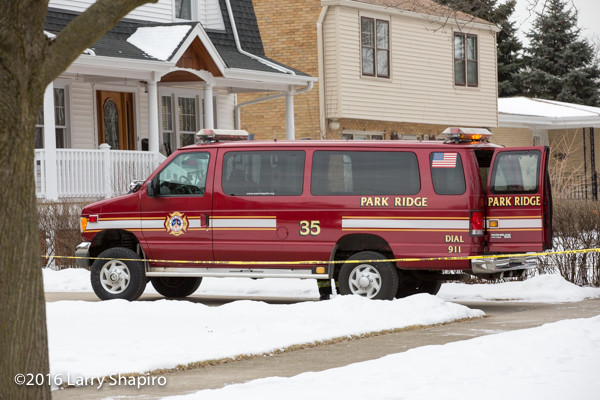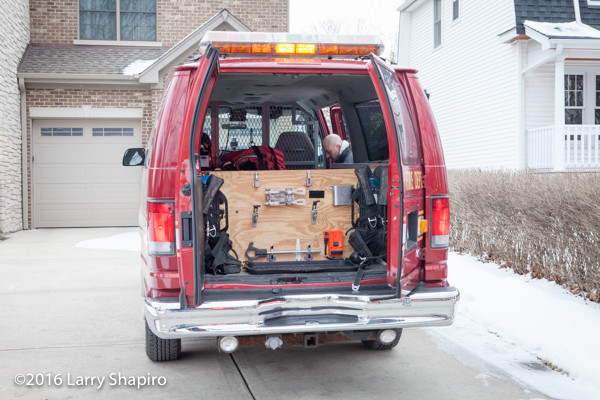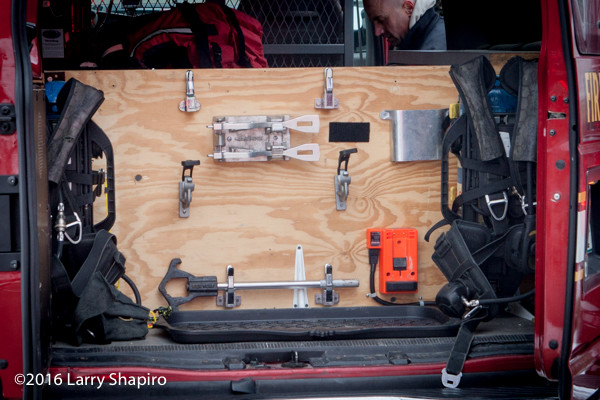Excerpts from the ChicagoTribune.com:
Last year, Park Ridge Fire Department firefighter/paramedics responded to a record-setting 4,858 calls, according to the department’s 2015 annual report. It’s a number that has Fire Chief Jeff Sorensen acknowledging that the need for adding more paramedics may come as soon as next year. According to the annual report, last year’s call volume was 7 percent higher than 2014 and 12 percent higher than 2013. Of last year’s incidents, nearly 63 percent were for medical emergencies, 60 percent of these requiring advanced life support.
“We are still able to provide quality and expedient service to the residents of Park Ridge, but if our call volume continues to increase at a rapid pace, we will need to reevaluate our staffing levels,” Sorensen said.
A look at call history compiled by the fire department for the last 15 years shows 2007 had the second-highest number of incidents, with 4,561 recorded, followed by 2011, when there were 4,309. Most years hovered just under or slightly above 4,000 calls.
Sorensen points to a few factors for the growing call volume, including citizens living with more complex and long-term medical conditions that require frequent transportation to hospitals, new residential developments bringing new residents to the city, an immediate care center opening in 2012, and shorter hospital stays for ill patients.
Exactly what the fire department’s future staffing needs will be has not yet been determined, Sorensen said, though he does believe the addition of more housing units and overall development in the city will continue to impact call volume.
The fire department has a staff of 50, with 15 paramedics serving on three shifts each. In 2015, the department paid out $315,540 in overtime, largely to maintain the required staffing levels. But adding new staff could be a challenge. Fire department layoffs — as many as 12 firefighter/paramedics — were included in the city manager’s recent cost-cutting recommendations, should the city’s share of money from the state be reduced.
Two ambulances are staffed each day, Sorensen explained, so if a third call comes in and both ambulances are taking patients to the hospital, out-of-town paramedics will need to be called in. That happened about 300 times last year, the 2015 report shows.
Calls involving two simultaneous incidents jumped dramatically in 2015, from just over 800 to more than 1,300. The average amount of time it takes crews to respond to a call was up last year compared to prior years, Sorensen acknowledged, but it still falls below the department’s goal of 360 seconds.
In terms of fires, there were 35 reported in 2015, one-third of which occurred inside residential buildings.
Going forward, the fire department is trying out new ways of responding to calls, including using a chase vehicle instead of a ladder truck to respond with an ambulance on medical calls.
“The goal of the rescue vehicle is to take some of the bigger rigs off the street when practical,” Sorensen told the City Council on Feb. 10, explaining that this will lead to less wear and tear on the trucks and possibly extend their use.
thanks Dan
About Park Ridge FD Rescue 36 mentioned in the article:
This from Bill Smaha:
Trial period for the Rescue 36 runs until April 30. Staffed with one FF/PM and one LT/PM. Designed to assist on ambulance calls and service calls not requiring a fire suppression vehicle. Rescue 36 is ALS equipped along with hand tools, tool box, rope, PFD’s, mustang suit, and SCBAs. If staffing is above minimums, the rescue will be staffed for 24 hours. If staffing is below minimums, it will be staffed from 8am-6pm.

Park Ridge FD Rescue 36. Larry Shapiro photo

Larry Shapiro photo

Larry Shapiro photo






























#1 by Bill Post on February 22, 2016 - 4:53 PM
Yes that’s correct Matt the strong point of San Antonio’s system allows them to keep their trucks and engines in service with three men when the squad goes out. Conversely it is also a weak point because if one of the two companies is out on a run the squad can’t be used, so as far as i know, the other company would go out on the run instead.
#2 by Matt on February 22, 2016 - 12:06 PM
If that is true for San Antonio, it works for them since they have 4 man companies for engines and trucks
#3 by Bill Post on February 21, 2016 - 5:05 PM
Thanks for the information BIll S. Mike I agree with you that outfitting an on-premises unit makes sense for the experiment to see how well it actually works out. The rescue concept seems good as long at the minimum manning is kept up so that the tower ladder or engine isn’t shorthanded. Another thing is that using the rescue makes sense in 36’s district as the rescue would be first-in anyhow but if the emergency is located in 35’s district then it makes more sense to send Engine 35 (assuming that they are available) as Engine 35 would be closer and would probably beat Rescue 36 to the scene.
Incidentally since we are talking about the concept of using a lighter vehicle to take the wear and tear off of the heavier apparatus for EMS runs, the city of San Antonio, Texas has been using that concept for a while now. This is how San Antonio does it. They currently run with 51 engines and 20 truck companies. All of their truck companies are located with engines so there are no single-truck stations. In 17 of their 20 stations that run with a truck company, they have either a small pickup truck or an suv which is designated as a squad, whose purpose is to run out first. The squads don’t have dedicated manning so if there is an EMS run and both the engine and the truck are in quarters, then one man from the engine and one man from the truck respond with the light-duty squad. That way the engine and truck will still remain in service with three men each until the squad returns to quarters. They also run with a light-duty squad at the airport. There is no truck assigned there. The last that I had heard is that San Antonio was running with about 18 of the light-duty squads.
#4 by Bill S on February 21, 2016 - 3:46 PM
Park Ridge Staffing Prior to Rescue 36 trial period:
E35: 3 / TW36: 3 or 4 (Try to keep 4 as much as possible) / A35: 2 / A36: 2 / Batt 35: 1. This is at minimum staffing levels (12). If there is no one off, then E36 will be put in service as well as additional FF’s on E35 and/or TW36.
Staffing during Rescue 36 trial period:
Same as above except minimums are 13 and E36 will not be staffed with extra personnel if no one is off.
There is no “jump companies” between any vehicles.
#5 by Bill Post on February 21, 2016 - 2:37 PM
Mike or anyone else wasn’t Engine 36 taken out of service a few years ago or was Tower Ladder 36 a jump company a few years ago before Engine 36 was taken out of service?
How are the 15 men per shift assigned to the stations and the current com this is how I have if figured out however it might not be completely accurate
This is how I have it figured out
Station 35 Ambulance 35 = 2 men, Engine 35 = 3 men = 5 men total
Station 36 Ambulance 36= 2 men, Tower Ladder 36 = 3 men Battalion 35 = 1 man Rescue 36 = 2 men =8 men total = 13 men total
That figure doesn’t account for the 14th and the 15th man so how are the 14th and 15th men assigned or are “they are fill in”s” for men on leave?
Another question is since the 2 man Rescue at station 36 is currently an experiment where were the men who are assigned Rescue 36 ,assigned before the Rescue “experiment” began?
Based on 3 men per company that should be enough to man 2 Engines , the Tower Ladder , 2 ambulances and the Battalion Chief with one man left over so how are the 15 men normally or usually assigned?
#6 by mike on February 21, 2016 - 3:30 PM
I think they have 15 a shift but then it drops due to time off. The way I read it is the officer and a FF jump to the rescue from the tower. I have to give PR credit for trying this and using an older vehicle not buying something to experiment on and then find out it doesn’t work.
#7 by Matt on February 21, 2016 - 11:52 AM
Was the 4×4 conversion on that van done by Quigley?
#8 by mike on February 21, 2016 - 10:12 AM
There needs to be some new ways of funding emergency services. Even though call volumes keep increasing departments are still talking about reducing manpower and finding news way to provide services. Maybe there is other funding out there like getting into the motor fuel tax money or billing for nuisance calls. I don’t know how PR would function with 12 less positions as it would lead to a company closure.